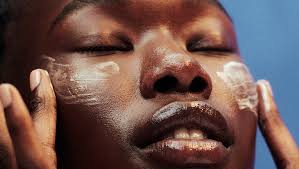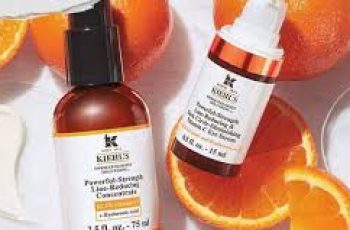
The Slugging Trend: Is It Worth It for Your Skin?
If you’re a skincare enthusiast—or a TikTok user like us (and yes, we’ve tried chlorophyll water)—you’ve likely heard of the recent skincare trend “slugging.” At first glance, the term might sound unappealing. After all, the word “slug” conjures up images of slimy creatures leaving a trail behind them. However, enthusiasts, including none other than Martha Stewart, swear by slugging as a miracle for dry, aging skin—and some even claim it can help alleviate eczema. But should you jump on the slugging bandwagon, or is this trend just another passing skincare fad?
We spoke with dermatologists Dr. Anna Chacon, MD, and Dr. Nancy Samulitis, MD, PhD, to get their expert opinions on whether slugging really delivers skin benefits or if it’s just an overhyped skincare trend. Here’s what we learned.
What is Slugging?
Slugging is a skincare practice that originates from Korean beauty (K-beauty) routines, although it has been around for over a century, according to Dr. Samulitis. Despite its resurgence on Reddit and TikTok, the practice of slugging is not exactly new—it’s simply gaining more attention in modern skincare culture. But what does “slugging” actually mean?
At its core, slugging involves applying a thick layer of an occlusive moisturizer (like petroleum jelly) over your face as the final step of your evening skincare routine. The purpose is to lock in moisture and create a barrier that prevents water loss from your skin overnight. While this practice is meant to hydrate dry skin, protect the skin barrier, and give your skin a glowing, plump appearance, there are a few things to consider before incorporating this trend into your skincare regimen.
Understanding Occlusive and Emollient Ingredients
Before jumping into slugging, let’s first break down some important terms: occlusive and emollient. You’ve probably encountered these terms while browsing beauty blogs or skincare product labels, but what do they really mean?
Occlusive Ingredients: These ingredients create a barrier on the skin’s surface that prevents transepidermal water loss (TEWL), which is the evaporation of moisture from your skin. This helps to seal in hydration and prevent dryness. Occlusive ingredients can include petroleum jelly, lanolin, and certain oils.
Emollient Ingredients: These are ingredients that soften the skin and improve its texture by filling in the spaces between skin cells. Emollients include substances like shea butter, coconut oil, and fatty acids.
Together, occlusive and emollient ingredients help maintain a healthy moisture barrier, ensuring your skin remains smooth, supple, and protected from external stressors like pollution and harsh climates. For individuals with dry or compromised skin barriers, these types of products can be especially beneficial.
The Benefits of Slugging: Is It Really That Great?
According to Dr. Chacon, slugging can indeed be beneficial, especially for people with dry, dehydrated, or sensitive skin. “Slugging is particularly helpful because it prevents moisture loss, which is crucial for individuals with dry skin, eczematous dermatitis, or those recovering from treatments like laser sessions or chemical peels,” she explains.
By applying a thick layer of occlusive moisturizer like petroleum jelly (or a more luxurious alternative), you’re effectively locking in all the hydration your skin needs overnight. Dr. Chacon adds that slugging can even help to smooth the appearance of fine lines and crepey skin over time, thanks to its ability to support a healthy moisture barrier.
Slugging can also be a great option for people dealing with flare-ups of eczema or other inflammatory skin conditions. It offers intense hydration, which helps to reduce irritation and promote healing. Furthermore, slugging may help calm skin that’s been damaged by harsh environmental factors, like cold weather, pollution, or sunburn.
A Few Things to Keep in Mind About Slugging:
Barrier Support: While slugging creates a temporary moisture barrier, it’s important to note that it’s not about “locking in” ingredients, but more about creating an environment that helps your skin heal and retain moisture. In fact, Dr. Samulitis advises focusing on supporting your skin’s natural barrier. “Instead of adding a barrier on top of your skin, prioritize products that help fortify your skin’s own barrier,” she says.
Best for Dry and Sensitive Skin: If you have dry, eczema-prone, or sensitive skin, slugging can be a game changer. For individuals with oily skin or acne, however, slugging may not be as beneficial and could even lead to breakouts. Petroleum jelly is highly occlusive, and while it is non-comedogenic when properly refined, it can trap excess oils, dead skin cells, and bacteria beneath it, leading to clogged pores and potential breakouts.
Don’t Overdo It: Slugging is intended to be an occasional treat for your skin. If you’re slugging every night, you might overwhelm your skin’s natural functions. Dr. Chacon suggests that slugging is most beneficial after intense treatments like peels, retinol use, or sunburn. Regular slugging is not necessary unless you have extremely dry skin or are trying to repair a compromised skin barrier.
The Ideal Slugging Products
While petroleum jelly (like Vaseline) is the go-to for many slugging enthusiasts, it’s not your only option. The idea behind slugging is to apply a thick layer of an occlusive ingredient, so look for moisturizers with similar properties.
Some slugging alternatives include:
Squalane: A lightweight but powerful emollient that also offers occlusive properties, making it a great choice for people with oily or acne-prone skin.
Marula Oil: This oil is emollient and occlusive, providing moisture while also offering antioxidants that can help soothe inflammation.
Coconut Oil: Known for its moisturizing properties, coconut oil is another option for those with dry skin but should be avoided by people with acne-prone skin.
Aquaphor Healing Ointment: A versatile product with occlusive properties that can be used for slugging without the greasiness of petroleum jelly.
Can Oily or Acne-Prone Skin Benefit from Slugging?
This is the million-dollar question, and Dr. Chacon’s response is clear: It depends on your skin and how you use the product. Oily and acne-prone skin types might find slugging uncomfortable, as the thick layers can exacerbate oil buildup and lead to clogged pores. That said, incorporating slugging as an occasional step—such as when recovering from retinol use or acne treatments—may help prevent moisture loss.
Dr. Chacon suggests opting for a non-comedogenic, lightweight occlusive product if you’re prone to breakouts. Squalane or marula oil are good alternatives to petroleum jelly as they hydrate and lock in moisture without making your skin feel greasy.
Dr. Samulitis’ Advice for Barrier Repair
While slugging can work for certain skin types, Dr. Samulitis emphasizes that it’s essential to focus on maintaining a healthy skin barrier rather than just “slugging” it up. “Avoid over-exfoliating with too many actives, and be gentle with your skin. Your skin’s natural barrier is your first line of defense against irritants, so nurturing that barrier should always be a priority,” she advises.
To repair the skin barrier, look for moisturizers with ceramides—ingredients that mimic the lipids in your skin and help seal the skin barrier naturally. Dr. Samulitis also recommends using hydrating serums and mild cleansers to maintain a balance of moisture in the skin, which will keep it resilient against dryness and irritation.
Should You Try Slugging?
Ultimately, slugging isn’t for everyone, but it can offer significant benefits for dry, sensitive, or compromised skin. It’s a great tool for locking in moisture after a treatment or calming inflammation from conditions like eczema. However, if you have oily or acne-prone skin, it’s better to use slugging sparingly and opt for lighter, non-comedogenic alternatives.
The key to great skin is balance—using the right products for your unique skin type and needs, whether that means slugging once a week or focusing on strengthening your skin’s natural moisture barrier. Always listen to your skin and consult with a dermatologist if you’re unsure which route is best for you.


